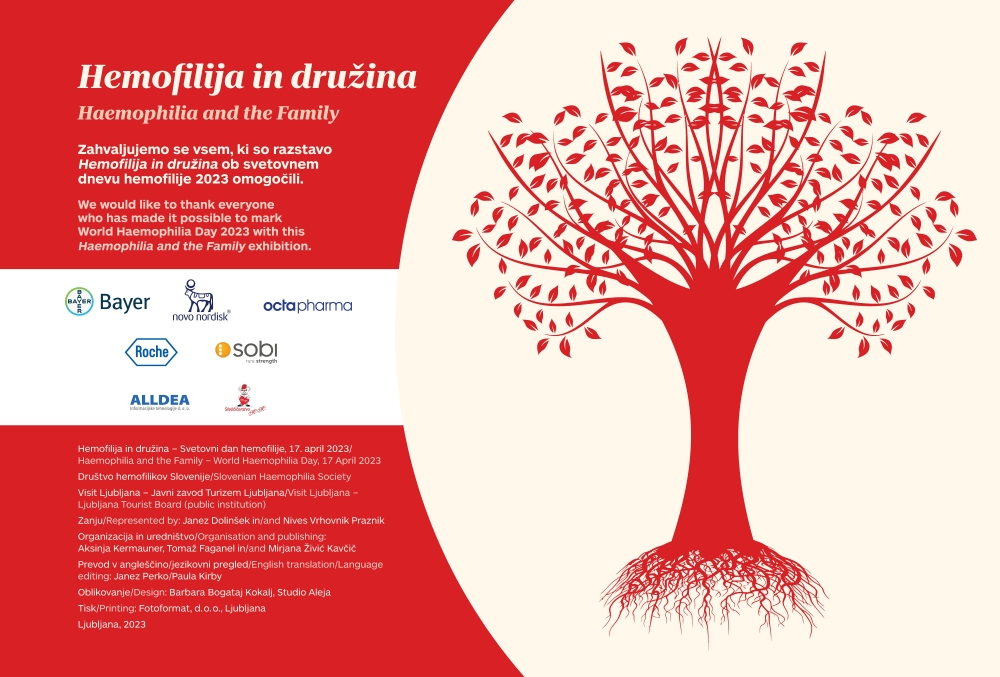Rojstni dan Franka Schnabla, kanadskega hemofilika, ki je povezal bolnike z zdravniki po vsem svetu, je svetovni dan redke bolezni hemofilija. Zaradi pomanjkanja enega od 13 faktorjev strjevanja krvi se zlasti notranja krvavitev že zaradi neznatne poškodbe sploh ne zaustavi. Praviloma zbolijo dečki, bolezen pa prenašajo ženske, čeprav ni vedno dedna. Zdravljenje s krvnimi pripravki je v 2. polovici 20. stoletja izboljšalo življenje hemofilikov v Sloveniji po zaslugi predanih prostovoljnih krvodajalcev, a ne brez nevarnosti (hepatitis A, B in C ali HIV). Danes se z »umetnimi,« rekombinantnimi faktorji strjevanja krvi krvavitve ne samo zaustavljajo, ampak brez vsake nevarnosti celo preprečujejo s samovbrizgavanjem manjkajočega faktorja v žilo. V zadnjem času pa so na voljo tudi nefaktorske oblike zdravil, ki se lahko aplicirajo podkožno. V Sloveniji žive hemofiliki zaradi odličnosti javnega zdravstva in 40-letnega delovanja Društva hemofilikov praktično normalno življenje prav na račun solidarnosti svojih zdravih sodržavljanov. Zato na »svoj dan« vsem izražamo neizmerno hvaležnost.
World Haemophilia Day is observed annually on the birthday of Frank Schnabel, a Canadian haemophiliac who connected patients with doctors around the world. If someone does not have enough of one of the 13 blood clotting factors, bleeding does not stop, even after a minor injury. This applies to internal bleeding, especially. The disease mostly affects males and is usually transmitted by females, although it is not always hereditary. Treatment with blood products was introduced in the second half of the 20th century and greatly improved quality of life for haemophiliacs in Slovenia, thanks to committed volunteer blood donors. It did carry risks of Hepatitis A, B or C, or HIV, however. These days, artificial recombinant blood clotting factors are used instead, selfinjected directly into a vein. Recently, non-factor forms of medication have become available and they can be administered subcutaneously. This not only stops any bleeding but also prevents it, and is very safe. Slovenia’s excellent public healthcare system and 40 years of the Slovenian Haemophilia Society mean that haemophiliacs now lead virtually normal lives – thanks to the solidarity shown by their healthy fellow citizens. And so, on our special day, we would like to express our immense gratitude to all of them.
Hemofilija – osebna izkaznica
Hemofilija je redka prirojena motnja strjevanja krvi, za katero je značilna zmanjšana količina beljakovine, potrebne za strjevanje krvi, t. i. faktorja VIII (hemofilija A) ali faktorja za strjevanje krvi IX (hemofilija B). Resnost bolezni je odvisna od preostale ravni faktorja strjevanja krvi v telesu. Zaradi znižane ravni faktorja, se po poškodbi krvavitev ne more zaustaviti. Za hemofilijo so značilne krvavitve po operaciji ali poškodbi, ter krvavitve v velike sklepe (predvsem komolce, kolena in gležnje) in mišice, ki lahko nastanejo brez pomembne poškodbe. Če niso zdravljene, ponavljajoče se krvavitve vodijo v nepovratno okvaro sklepov, za katero je značilna omejena gibljivost ter bolečine. Sodobno zdravljenje hemofilije temelji na preprečevanju krvavitev, zato osebe s hemofilijo prejemajo redno preventivno zdravljenje. V primeru operacije, poškodbe ali krvavitve pa prejmejo dodatne odmerke zdravila. V dveh tretjinah se hemofilija podeduje, kar pomeni, da se okvarjeni gen prenese na otroka preko matere, v tretjini primerov pa je hemofilija posledica spontane mutacije pri otroku. Gena za hemofilijo A in hemofilijo B se nahajata na kromosomu X. Hemofilijo diagnosticiramo z odvzemom vzorca krvi, v katerem izmerimo aktivnost faktorja.
Haemophilia – what it is
Haemophilia is a rare congenital blood clotting disorder characterised by a reduced amount of one of the proteins necessary for blood clotting: factor VIII in the case of haemophilia A or factor IX in the case of haemophilia B. The severity of the disease depends on the remaining level of the clotting factor in the body. Due to the reduced factor level, bleeding cannot be stopped after an injury. Haemophilia is characterised by bleeding after surgery or injury, as well as bleeding in large joints (mainly elbows, knees and ankles) and muscles, which can occur even when there is no significant injury. If left untreated, repeated bleeding leads to irreversible joint damage characterised by limited mobility and pain. Modern treatment of haemophilia is based on the prevention of bleeding, so people with haemophilia receive regular preventive treatment. In the event of surgery, injury or bleeding, they receive additional doses of the medication. In two thirds of cases haemophilia is inherited, which means that the defective gene is passed down to the child through the mother; in one third of cases haemophilia is the result of a spontaneous mutation in the child. The genes for haemophilia A and haemophilia B are located on the X chromosome. Haemophilia is diagnosed by taking a blood sample and measuring the factor activity in it.
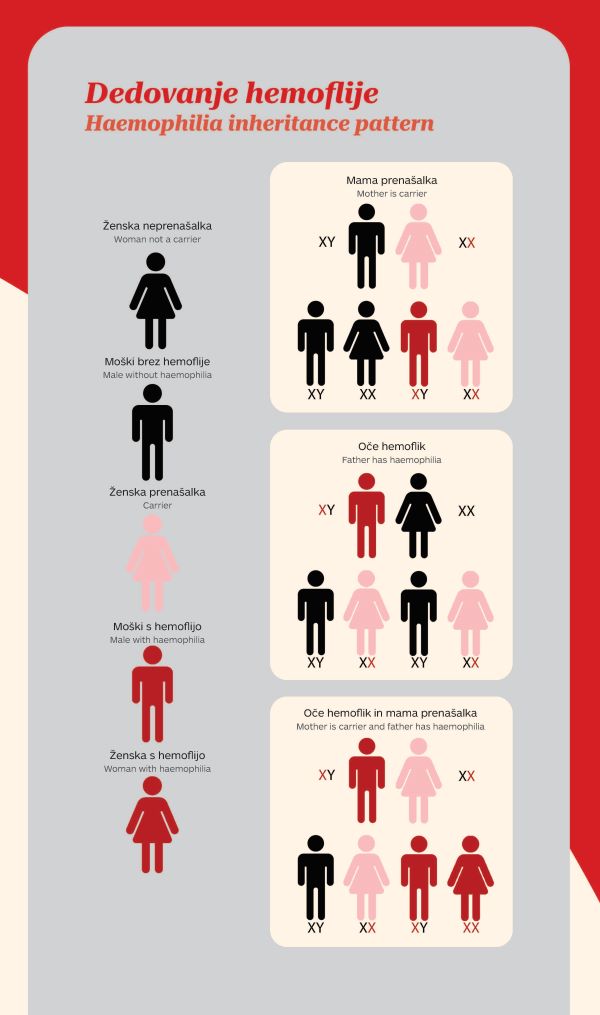
Ajda
Rodila sem se očetu hemofiliku, zato sem prenašalka in imam znižan faktor IX (18 %). Ob operacijah mojih kolen je zame skrbela hematologinja dr. Majda Benedik Dolničar. Tako je bilo tudi pri prvem porodu. S seboj mi je dala koncentrat faktorja IX, da bi mi ga pred porodom vbrizgali. Med popadki sem ugotovila, da sestre ne vedo, kako se pripravi. Zato sem si ga pripravila kar sama, one pa so mi ga samo injicirale.
Moj oče je kmet hemofilik, ki se že več kot 40 let ljubiteljsko ukvarja s kasaštvom in konjerejo. V njegovem hlevu se je rodilo 31 žrebet, od leta 2002 pa redno tekmuje. S svojim konjem je na šampionatu Slovenije osvojil 2. mesto, pred tekmovalno kariero pa je bil sodnik na kasaških dirkah.
Ker kri ni voda, smo se v enake vode spustili tudi jaz in moja otroka. Tekmujem že 20 let, od svojega petnajstega leta. Moja največja uspeha sta 2. mesto na slovenskem kasaškem derbyju in 2. mesto na rejski dirki Jesenski kriterij. Prav tako delam na domači kmetiji, kjer z možem in dvema otrokoma vzgajamo kasaške konje in pridelujemo hrano za svojo družino.
I was born to a haemophiliac father, so I am also a carrier and have reduced factor IX (18%). During my knee operations, I was cared for by haematologist Dr Majda Benedik Dolničar. It was the same with my first birth. She gave me factor IX concentrate to take with me to be administered before delivery. After my contractions had started, I realised that the nurses had no experience of preparing it. So I prepared it myself and they just injected it.
My father is a haemophiliac farmer who has been breeding horses and trotting racing as a hobby since 1982, more than forty years. Thirty-one foals have been born in his stable, and he has been competing regularly since 2002. He and his horse came 2nd in the Slovenian championship, and before he started competing himself he was also a judge at trotting races.
Keeping it in the family, I and my two children also took up the same hobby. I have been competing for twenty years, since I was fifteen. My best result so far was 2nd place at the Slovenian trotting derby and 2nd place in the Autumn Criterion breeders’ race. I also work on our home farm, where I, my husband and two children raise trotting horses and grow food for our family.
.jpg)
Mitja
Pisalo se je leto 1989 in star sem bil 10 let. Pot po mulatjeri je vodila do Krnskega jezera. Takrat se mi ni zdelo, da je pot do cilja naporna. Toda naslednji dan so moji gležnji to teorijo ovrgli. Počitnice v Posočju so se predčasno končale, saj je bil po obisku lepot slovenskega hribovja potreben še obisk bolnišnice. Zaradi ponavljajočih se krvavitev v gležnje sem vrsto let naravo in hribe občudoval bolj na fotografijah kot na lastne oči. 30 let pozneje se mi je, zahvaljujoč hematologom in napredku v medicini, uspelo z družino ponovno povzpeti do prelepega cilja v Julijskih Alpah. Tokrat sta se 7-urni pohod in uživanje v pogledih in v družbi družine končala brez obiska bolnišnice, pa čeprav sem večino poti nosil v nahrbtniku enoletnega sina. Fotografije Krnskega jezera, ki so nastale na tem izletu, so čudovite, ampak lahko rečem le, da je doživljanje narave v družbi najdražjih neprecenljivo!
It was 1989 and I was 10 years old. We were on a mule track leading to Lake Krn. At the time, I did not think the track was too arduous, but the next day my ankles told a different story. My holiday in the beautiful hills of the Posočje region ended prematurely, with a trip to hospital. Subsequent repeated bleeds in my ankles meant that for many years I usually had to content myself with admiring nature and the hills in photographs rather than with my own eyes. Thirty years later, thanks to the work of haematologists and advances in medicine, I once more managed to join my family on a climb to our beautiful destination in the Julian Alps. This time, the seven-hour hike enjoying the views and the company of my family did not end in hospital, even though I was carrying my one-year-old son in my backpack most of the way. The photos we took of Lake Krn on that trip are wonderful, but I can only say that admiring the beauty of a landscape in the company of loved ones is priceless!
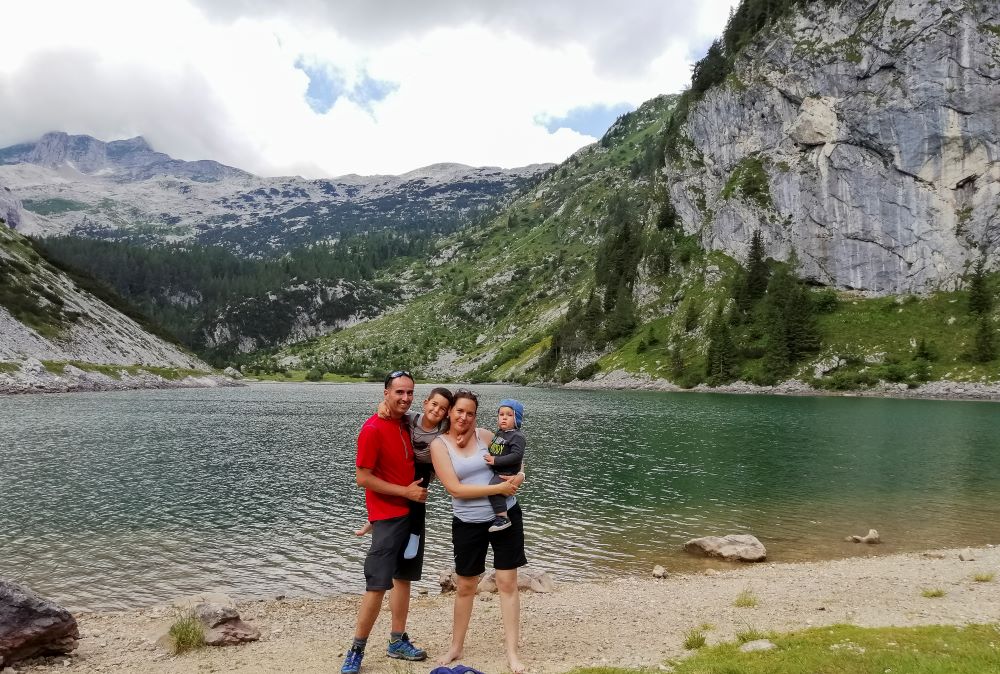
Taj
Taj se je rodil s prirojeno hemofilijo A srednje stopnje, o kateri pred njegovim rojstvom nismo vedeli skoraj nič. V prvem letu življenja je dobil še diagnozo ADHD. Zaradi te kombinacije imamo dnevno kar nekaj izzivov, vendar jih s strokovno pomočjo tako doma kot v šoli kar se da uspešno premagujemo. Taj obožuje šport; najraje kolesari, rola, igra nogomet, drsa, smuča in hodi v hribe, kjer najde svoj mir. Kot tudi drugi člani družine, saj so te dejavnosti skupne, kar pa nas tudi zbližuje in povezuje. Redno trenira plavanje, saj ima tudi zelo rad vodo. Vsake tri dni prejema faktor, ki smo se ga naučili dajati sami. To mu pomaga, da se lahko redno ukvarja s športom in nima trajnih poškodb.
Pred skoraj dvema letoma se nam je pridružil še en član, sin Tim, ki pa nima hemofilije. Fanta sta med seboj vzpostavila neverjetno vez, kar pripomore k temu, da so ovire na naši poti lažje premagljive.
Brina in Sašo
Taj was born with moderate haemophilia A, a congenital disorder about which we knew almost nothing. In his first year he was also diagnosed with ADHD. This combination presents quite a few challenges in daily life, but professional support, both at home and at school, are helping us to overcome them as much as possible. Taj loves sports: cycling, rollerblading, football, skating, skiing and just going to the hills, where he finds peace. The whole family joins in these activities, so they bring us all closer together. He regularly attends swimming lessons, as he loves being in the water, too. Every three days he receives doses of clotting factor, which we have learned to administer ourselves. This allows him to do sport regularly without risking permanent injuries.
Almost two years ago we had another son, Tim, who does not have haemophilia. The two boys have formed an incredible bond, which makes it easier to overcome the obstacles on our path.
Brina and Sašo
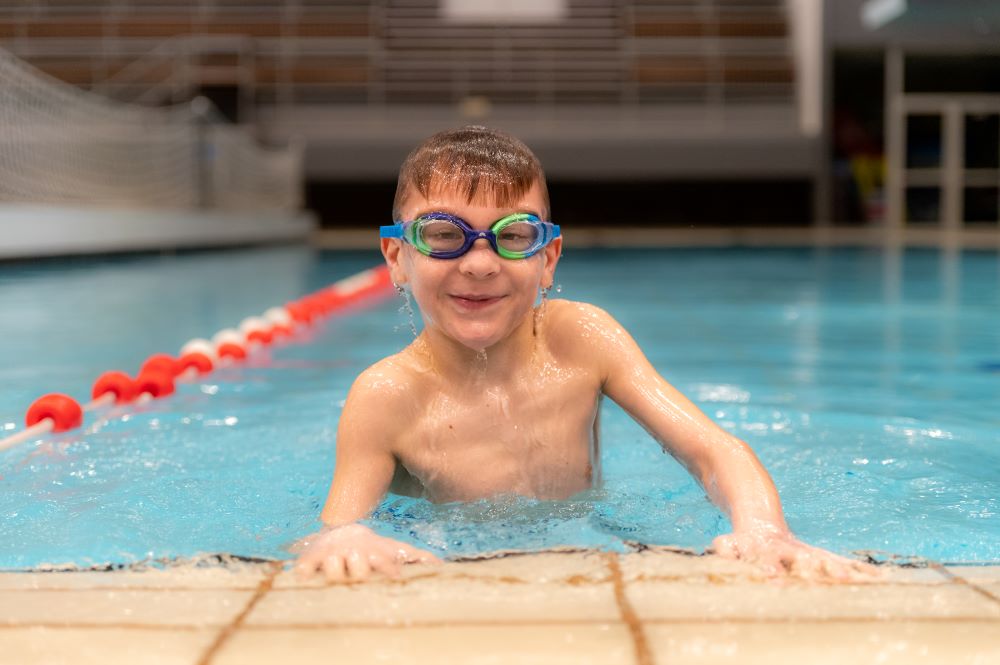
Leopold
»Težka oblika hemofilije. Življenjska doba s to boleznijo je tam nekje do 15 let.« To je povedal zdravnik staršem, ki so me pripeljali na pregled v Ljubljano, ker jim ni bilo jasno, zakaj imam otekle sklepe in stalne krvavitve v dlesni.
Bolečina in žalost, šok za starše. Kako naprej, kako pomagati?
Začela se je življenjska kalvarija. Veliko krvavitev, veliko bolečin, neprespanih noči in ležanja. Ko sem ob postelji gledal mamo, je bila njena bolečina veliko večja od moje.
Tekla so leta. Bilo je veliko bolnišnice in transfuzij v Kliničnem centru. Postopno so se začela pojavljati zdravila za to neozdravljivo bolezen, ki so lajšala težave in preprečevala krvavitve. Danes imamo zelo dobre zdravnike in medicinske sestre, predane stroki in pacientom, in tudi zelo dobra zdravila. Iz obdobja, ko jih še ni bilo, so ostali deformirani sklepi, atrofija mišic. Z vztrajnostjo, fizioterapijo in gibanjem ohranjamo kondicijo in moč.
Kljub vsemu, kar sem preživel do svojih 77 let, sem optimist in vsakemu povem: ŽIVLJENJE JE LEPO!
“It’s a severe form of haemophilia. Life expectancy with this disease is anything up to 15 years.” This is what the doctor told my parents, who had taken me to Ljubljana for tests because they could not understand why I had swollen joints and constant bleeding from my gums. It was a huge shock for them, followed by pain and grief. They had no idea what to do, or how to help.
It was the start of a lifelong ordeal. Lots of bleeding, lots of pain, sleepless nights and bed rest. Looking at my mother at my bedside, I could see her pain was far greater than mine.
Years passed. There were many hospitalisations and transfusions at the Clinical Centre. Gradually, though, treatments for this incurable disease began to appear, alleviating the hardships and preventing the bleeding. Today we have very good doctors and nurses who are dedicated to their profession and their patients, and very good treatments too. Deformed joints and muscular atrophy remain from the time before these treatments existed. With perseverance, physiotherapy and exercise, some fitness and strength can be maintained.
I am 77 now and, despite everything I've been through, I am still an optimist and always tell everyone that LIFE IS BEAUTIFUL!
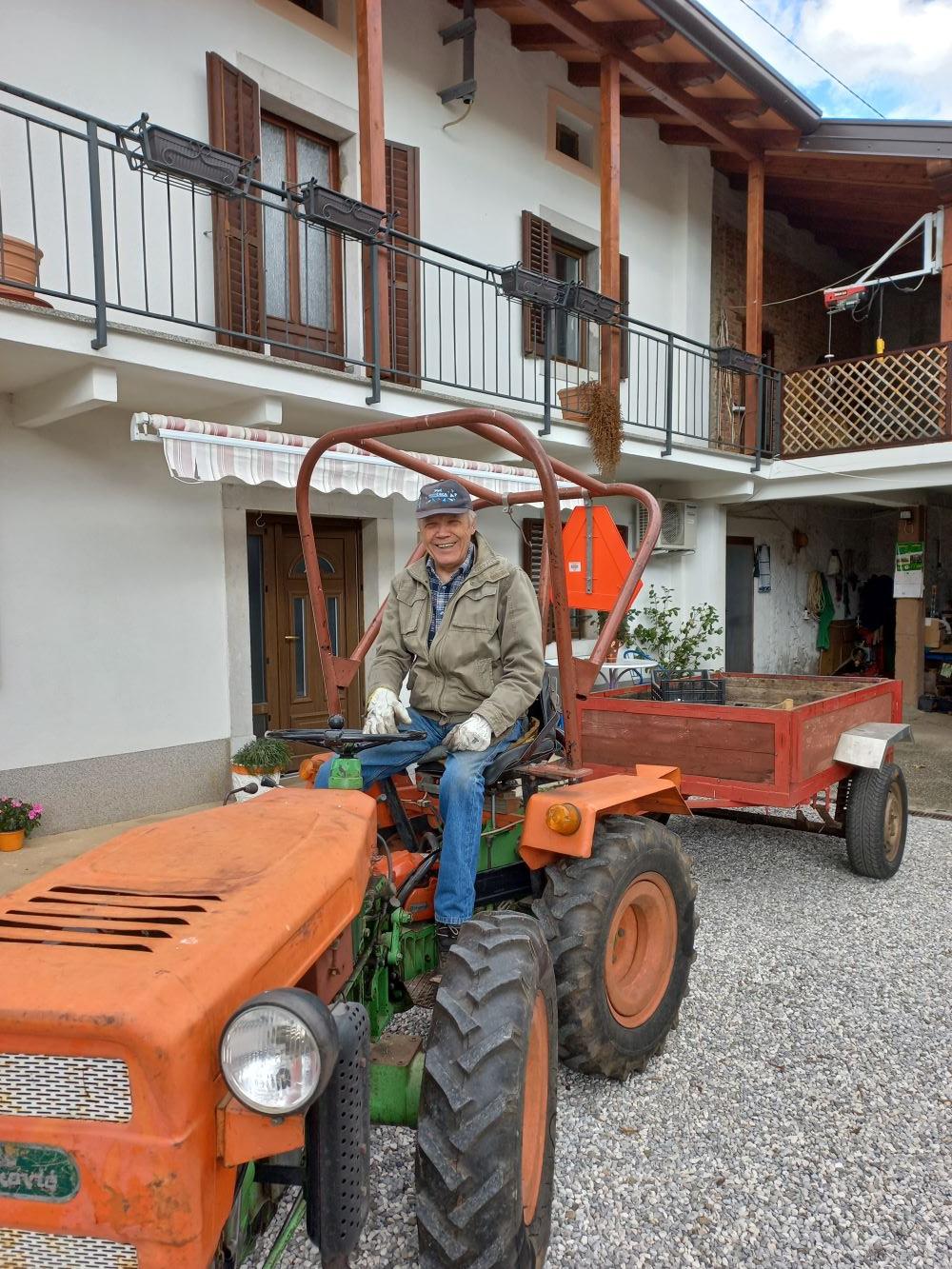
Jošt
Kot otrok, rojen leta 2002, sem imel to srečo, da je razvoj zdravil za zdravljenje hemofilije do takrat že zelo napredoval. Vendar so moje otroštvo vseeno zaznamovale krvavitve, zaradi katerih sem se moral odreči vsem športom. Z leti so zdravila zelo napredovala, hkrati pa sem se naučil sam dajati faktor brez pomoči staršev oziroma medicinskih sester. Počasi sem se začel ukvarjati tudi z lažjimi športi; najraje imam plavanje in kolesarjenje. Zdaj hemofilijo komaj še opazim. Zdravila lahko kamorkoli vzamem s seboj, hkrati pa se lahko pohvalim z vrhunsko športno kondicijo, saj v zadnjih letih prekolesarim tudi po 5000 km letno. Letos poleti sem se v dobri družbi prvič podal na Triglav, pozneje pa še na kolesarjenje v Dolomite. Skupno se je v sedmih dneh nabralo 700 km razdalje in 12.500 metrov vzponov. Občutki so bili neopisljivi. V načrtu imam tudi še nekaj ambicioznih podvigov, a ti naj zaenkrat ostanejo skrivnost.
Mislim, da smo lahko srečni, da živimo v takem času, pa tudi hvaležni, da je v Sloveniji za hemofilike tako dobro poskrbljeno. V marsikateri državi imajo slabšo oskrbo s faktorjem, kot jo imamo v Sloveniji.
As a child born in 2002, I was fortunate in that the development of medication to treat haemophilia was already well advanced by then. All the same, my childhood was still marred by bleeding, which forced me to give up all forms of sport. The medication has improved a lot over the years, and I have also learned to administer the clotting factor myself, without the aid of parents or nurses. I gradually started doing some lighter sports, my favourites being swimming and cycling. Now I hardly notice my haemophilia anymore. I can take my medication with me wherever I go and at the same time boast of being in great sporting condition, since I’ve been doing up to 5,000 km a year on my bike these last few years. This summer I went to Triglav with friends for the first time, and later went cycling in the Dolomites. I covered 700 km in total, and also climbed 12,500 metres in seven days. It was an indescribable feeling. I have a few more ambitious adventures planned, but I’m keeping those secret for now.
I think we can be happy to be living in a time like this, and also grateful that haemophiliacs are so well taken care of in Slovenia. In many countries the supply of clotting factor is more limited.
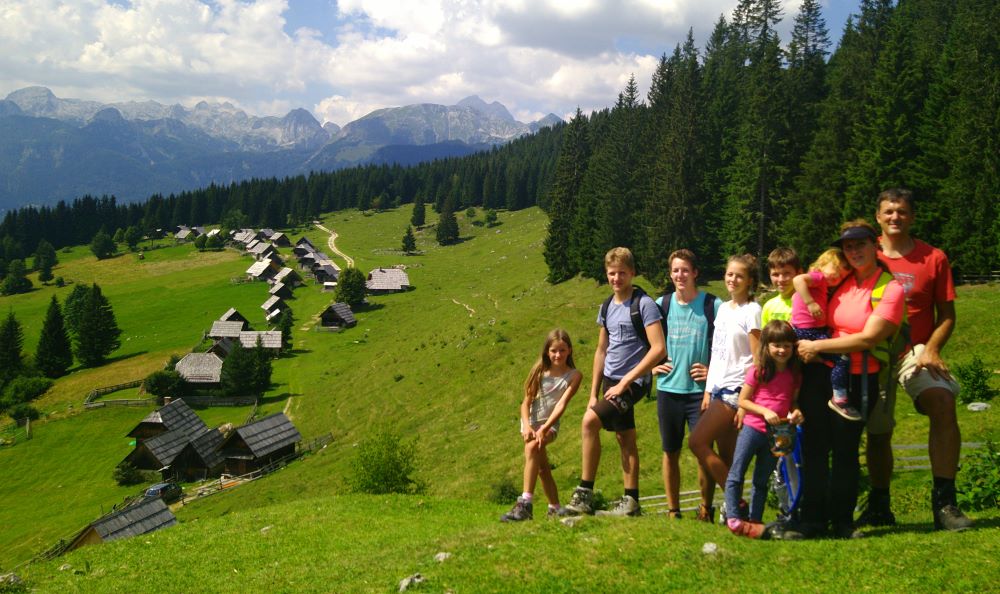
Janez
Rodil sem se v kmečki družini štirih otrok. Imam hemofilijo B srednje stopnje (F IX 2,2 %). Pri desetih letih sem prvič dobil krvaveč ulkus. To me je spremljalo nekako do 30 leta. Krvavitev v sklepe skoraj nisem imel, najbrž tudi zaradi dobre fizične kondicije, saj je na kmetiji ogromno dela. Predviden sem bil za naslednika na kmetiji; to se je pozneje tudi zgodilo. Vsako krvavitev sem moral zdraviti v bolnišnici, tudi do desetkrat na leto. To je bilo desetdnevno druženje s kolegi hemofiliki, igranje taroka ipd., torej kar prijetno zdravljenje. Ker se mnogi ljudje kakršnikoli bolezni raje izognejo v velikem krogu, sem bil prijetno presenečen, ko sem bodočega zeta vprašal, ali ve, kaj je hemofilija (hči je namreč prenašalka). Odgovoril je: »Ali vam kaj manjka?«
Predvsem pa sem zadovoljen, da se lahko ukvarjam s tem, kar imam rad. To so konji, kasaški konji, s katerimi tekmujem že 40 let.
I was born into a peasant family of four children. I have a moderate form of haemophilia B (F IX 2.2%) and had my first bleeding ulcer when I was ten years old. This stayed with me until I was about thirty. I had almost no bleeding in my joints, probably partly due to my good physical condition, since there is a lot of manual work on a farm. I was supposed to inherit the farm, and that happened later. Every episode of bleeding had to be treated in hospital, up to ten times a year. That meant ten days of hanging out with fellow haemophiliacs, playing tarot, etc., so the treatment was quite enjoyable. Since many people try to give disease of all kinds a wide berth, I was pleasantly surprised when I asked my future son-in-law if he knew what haemophilia was (my daughter is a carrier) and he answered, ”Is there anything you need?”
More than anything, I am just happy to be able to go on doing what I love, by which I mean my harness horses, which I have been racing competitively for 40 years.
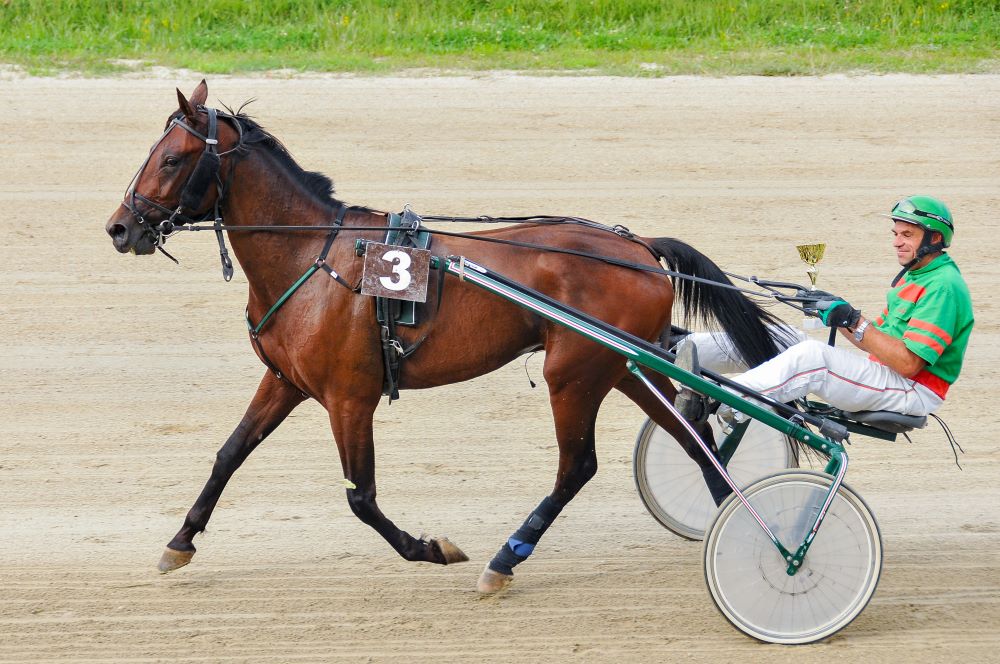
Fedja
Star je 12 let. Že nekaj let ne dovoli več, da bi ga mama strigla. Sam se naroči k svojemu frizerju. In ne kar h kateremukoli. H Kostku. Ker on zna.
Tja gre s skirojem. In s čelado.
Rad hodi v šolo. Tja gre vsak dan že eno uro prej, da lahko klepeta s prijatelji. Pri pouku mu je zanimivo. Zapomni si veliko. Najboljši predmet mu je šport, še posebej košarka tri na tri.
Če ga po šoli vprašamo, kako je bilo, vedno sledi enak kratek odgovor: »V redu.«
Ob sobotah je siten, če ga zbudimo prezgodaj. Rad spi do desetih. Potem prebere Sobotno prilogo od začetka do konca. Zapomni si skoraj vse.
Rad ima jajčka z ocvirki. Pa ne kar z enimi, z domačimi, belokranjskimi.
Igra tenis. S trenerjem Ažom. Ker Ažo je faca.
Za rojstni dan je dobil dve karti za kino. Že nekaj časa bi rad njeno telefonsko številko. Zaenkrat je še nima. Enkrat jo bo dobil.
He is 12 years old. He hasn’t let his mother cut his hair for several years now. He makes his own appointment with the hairdresser. Not just any hairdresser: it has to be Kostka. Because Kostka knows.
He goes there by scooter. Wearing a helmet.
He likes going to school. He sets off an hour early every day so he can chat with his friends. He finds his lessons interesting. And has a good memory. His favourite subject is Physical Education, especially 3x3 basketball.
When asked how school was that day, he always gives the same short answer: "Fine."
He gets annoyed if we wake him too early on Saturdays. He likes to sleep until ten. Then he reads the Saturday supplement from cover to cover and remembers almost all of it.
He likes eggs with cracklings. Not just any cracklings: they have to be the local ones, from Bela Krajina.
He plays tennis. With Ažo, his coach. Because Ažo is cool.
He got two cinema tickets for his birthday. For some time now he has been wanting her phone number. He doesn't have it yet. But he will, sometime.
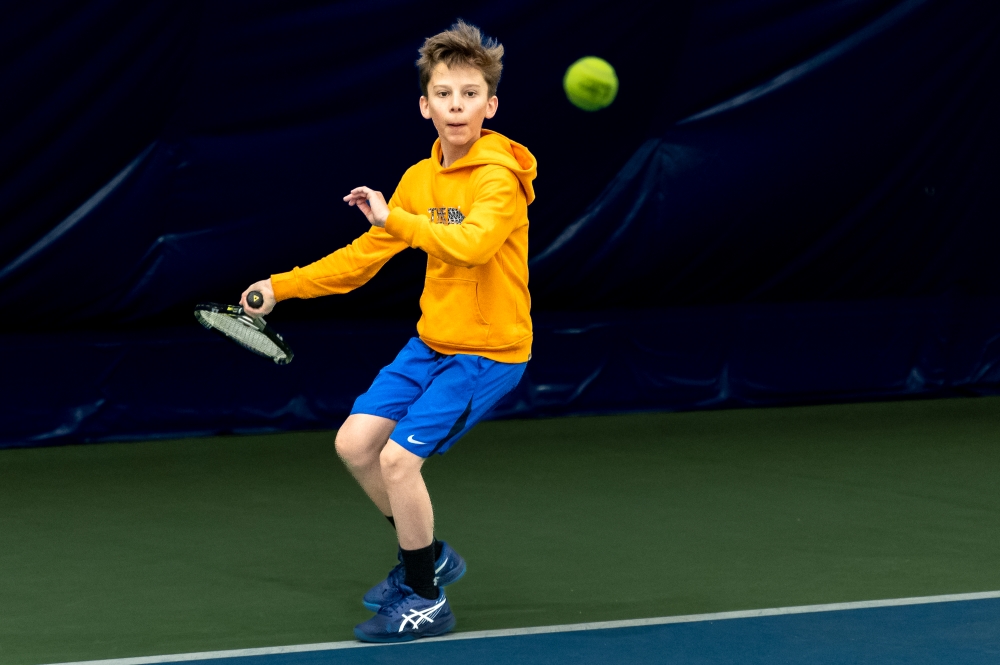
Srečko
Hemofilija je pred 2. svetovno vojno veljala za neozdravljivo bolezen, ki vodi v zgodnjo smrt. Zdravniki niso nič vedeli o hemofiliji. Bilo nas je zelo malo, zato nam nihče ni posvečal pozornosti. Mladosti praktično nisem imel, nikamor nisem smel iti sam, nikoli z vrstniki. Vedno je bil ob meni kdo od starejših sorodnikov. Vsaka krvavitev je pomenila najmanj teden dni ležanja v postelji. Ko sem bil star 24 let, sem v službi občudoval sodelavca, ki se je vsak teden odpravljal v hribe. Vprašal sem ga, ali se mu kdaj lahko pridružim. Povabil me je s sabo in odprl se mi je čisto nov svet. Dandanes pa hemofilija z novimi načini zdravljenja skorajda ni več bolezen.
Before World War II, haemophilia was considered an incurable disease leading to an early death. Doctors knew nothing about it. There were very few of us, so no one took any notice of us. I had virtually no youth and was not allowed to go anywhere, either alone or with my peers. One of my older relatives was always by my side. Every episode of bleeding meant at least a week in bed. When I was 24, I admired a colleague at work who would go to the hills every week. I asked him if I could join him sometime. He invited me along and a whole new world opened up for me. These days, though, with new treatments, haemophilia is hardly a disease at all anymore.
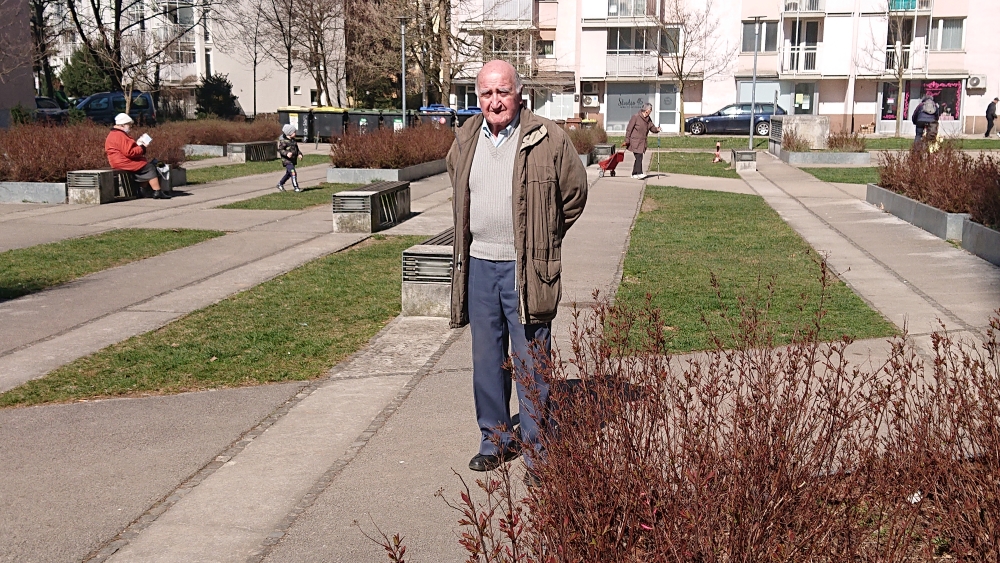
Tomaž
Gradec v Avstriji, 3. junija 1980, Univerza za glasbo, zadnja vaja pred diplomskim koncertom, krvavitev v gleženj, komaj še stojim pred orkestrom, po vaji mukoma v »katrco,« »gas« do mariborske hematologije, na meji nadležno traja, namesto pričakovane ambulantne terapije sprejem, pižama, postelja, popoldne končno transfuzija krioprecipitata, a odličen odgovor, olajšanje, pozno zvečer spet normalno stopam, misel na jutri, si brundam »svojo« simfonijo, zjutraj glavna vaja pred koncertom zvečer, presneti pižama in bolnišnica, dežurni navsezgodaj ne prevzema odgovornosti za odpust, podpis izjave o samovoljni prekinitvi zdravljenja, spet »gas« v Gradec, ob 10. uri v dvorani pred orkestrom, zvečer uspešen koncert, dolg aplavz, v kavarni velikanska skleda sladoleda, spet »katrca,« tokrat mirno, počasi, do doma …
Kako drugače je to danes …
University of Music, Graz, Austria, 3 June 1980, last rehearsal before the graduation concert: bleeding in the ankle, I can barely stand in front of the orchestra. After the rehearsal I struggle into my Renault 4 and drive at full throttle to the Maribor haematology clinic, stopping only for an irritatingly long queue at the border. Instead of the expected outpatient treatment I am admitted: pyjamas, bed, and in the afternoon – finally – a cryoprecipitate transfusion. I respond to it well: the pain goes and later that evening I am able to walk normally again, my thoughts focused on tomorrow, humming "my" symphony, thinking about the main rehearsal tomorrow morning before the evening concert. Damn pyjamas and hospital! The duty nurse refuses to take responsibility for my discharge, I sign a declaration of voluntary discontinuation of treatment, and then it’s full throttle back to Graz. At 10 a.m. I am in the concert hall, in front of the orchestra, the concert that evening is a success, long applause, a giant bowl of ice-cream in the café, then back to my Renault 4 and head home again – calmly, slowly this time ...
How different things are now …
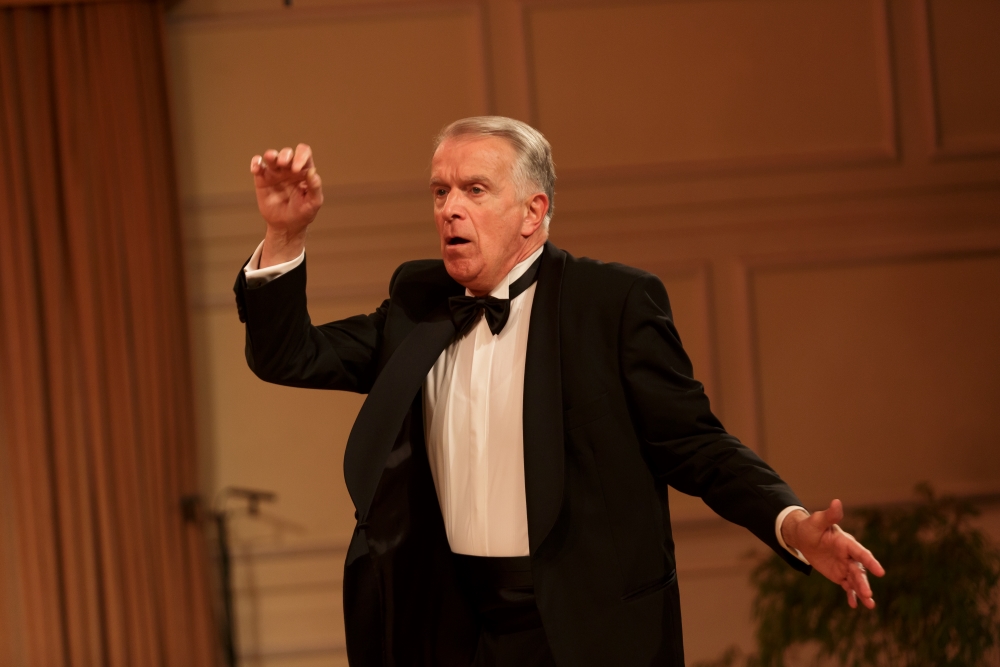
Gregor
Možnosti poškodb in posledičnih krvavitev so v preteklosti povzročale precej nelagodja pri potovanjih, tudi v ne tako oddaljene kraje. Nikoli nisi bil prepričan, da boš dobil potrebno zdravniško oskrbo, če bo prišlo do nepredvidljivih težav, povezanih z našo boleznijo. Zdravljenje hemofilije v Sloveniji je zelo dobro organizirano, v številnih državah še danes ni. Z uporabo najnovejših zdravil za zdravljenje hemofilije, ki ti omogočajo zaščito za nekaj dni in so obstojna tudi pri tropskih temperaturah, so za hemofilike tudi najbolj odročni kraji po svetu postali precej bolj dostopni.
The risk of injuries and bleeding used to cause considerable inconvenience when travelling even relatively short distances. You could never be sure of getting the medical care you would need if the disease caused any unforeseen problems. In Slovenia, treatment for haemophilia is very good, but there are still many countries where that is not the case. The latest medications for haemophilia provide several days’ protection and can withstand even tropical temperatures, meaning that even the remotest places in the world are now much more accessible for haemophiliacs.
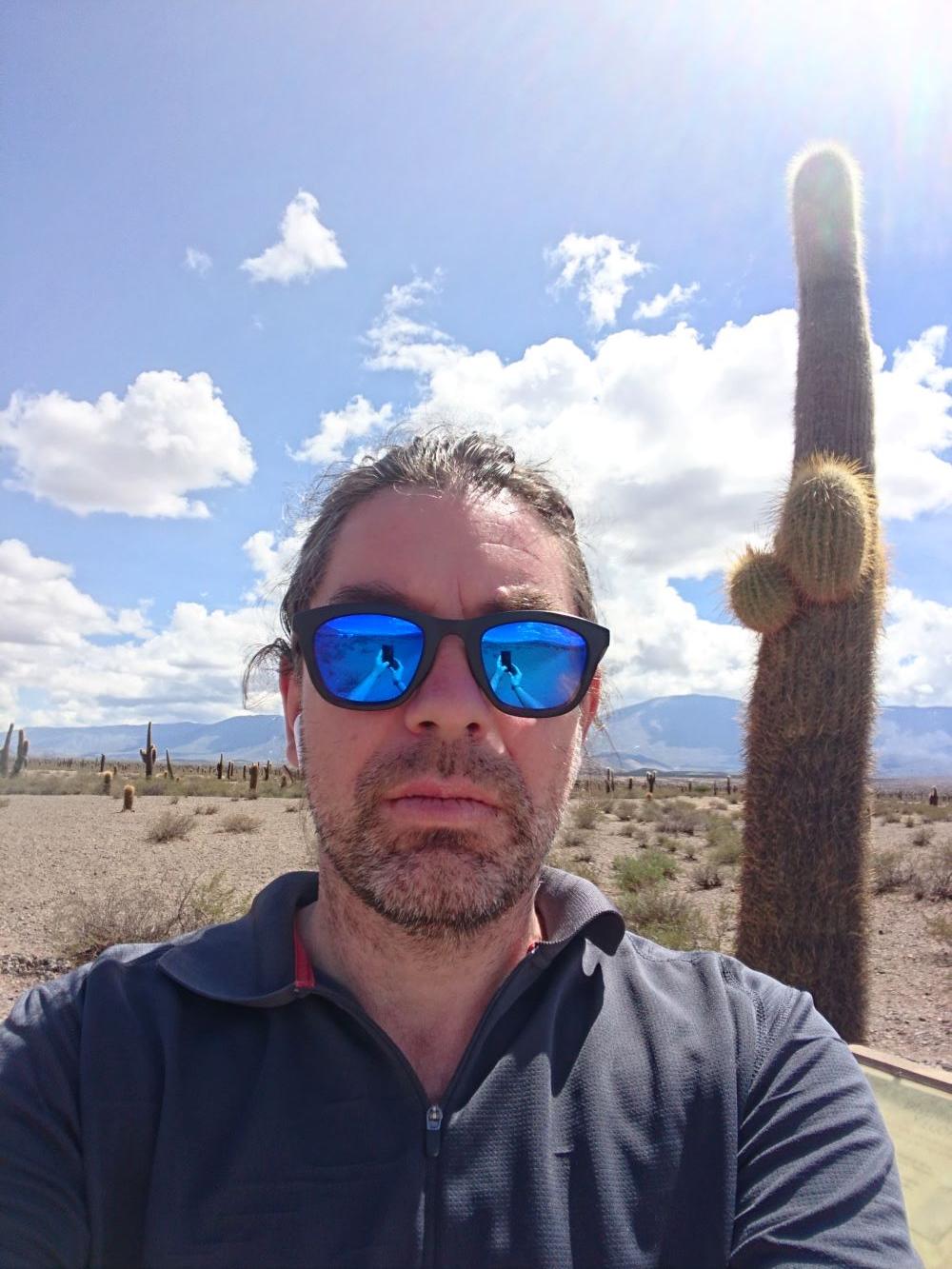
Mark
Pred enajstimi meseci je naša družina postala popolna, saj se je sestrici Evi Nikolini pridružil čudovit bratec Mark. Rodil se je s hemofilijo, boleznijo, za katero sva se odločila, da ga ne bo definirala in ovirala, ampak bo postala del njega, del nas. Rad se smeji, čeblja, hodi, sedi in se igra. Najrajši pa nagaja sestrici.
Mark je poseben fantek, pa ne zaradi svoje bolezni, ampak zaradi samega sebe, saj je unikaten, enako kot vsak otrok.
Ne zatiskava si oči, da je njegova bolezen lahka, ampak veva, da se bomo naučili živeti z njo. Kot pravi pregovor, kjer je volja, je pot.
Meniva, da bomo skupaj z našimi odličnimi hematologi lahko premagali vse ovire. S podporo družine in prijateljev pa bo naša pot še lažja, saj je Mark že zdaj obdan s čudovitimi ljudmi, katerim pozitivne energije in ljubezni ne manjka.
Mark, tebi pa sporočava, da si najin borec in da smo s sestrico neizmerno ponosni nate! Hvala, da si izbral naju za svoja starša!
Nina in Andraž
Eleven months ago, little Eva Nikolina was joined by a beautiful baby brother, Mark, and our family became complete. Mark was born with haemophilia, a disease we decided would neither define him nor hold him back, but would simply be a part of him, a part of us. He loves to laugh, babble, walk, sit and play. But most of all, he loves to tease his sister!
Mark is a special boy, not because of his illness but simply because of himself, because he is unique, like every child.
We do not pretend his illness will be easy, but we do know that we will learn to live with it. As the saying goes, where there's a will, there's a way.
We believe that, together with our excellent haematologists, we will be able to overcome all the obstacles. And the support of family and friends will make the journey even easier, since Mark is already surrounded by wonderful people, full of positive energy and love.
And Mark, we want you to know that you are our fighter and that we and your sister are immensely proud of you! Thank you for choosing us to be your family!
Nina and Andraž

Rok
Bil sem zelo živahen otrok. Že kot triletni fantič sem se najraje igral z žogo. Jo brcal, metal na koš, se lovil, kotalil ... Okoli petega leta so se mi v desnem gležnju začele pojavljati pogostejše krvavitve. Takrat smo za vsako krvavitev obiskali Pediatrično kliniko in na hematološkem oddelku sem prejel manjkajoči faktor. V tistem času se je hematologinja odločila, da zaradi ponavljajočih se krvavitev v isti gleženj začnem prejemati faktor VIII preventivno, dvakrat tedensko.
S preventivnim zdravljenjem so se krvavitve zmanjšale. Zaradi tega sem se večkrat in lažje udeleževal športnih dejavnosti v vrtcu in pozneje v šoli.
Glede na to, da medicina tako hitro napreduje in da se hematologi in društvo hemofilikov zelo trudijo za vse bolnike s krvnimi boleznimi, pričakujem, da bom še dolgo lahko užival v igranju košarke, tenisa, odbojke …
I was a very lively child. Even as a three-year-old, my favourite thing was playing with a ball, kicking it, throwing it, catching it, rolling it ... At around the age of five, I started bleeding frequently in my right ankle. Each time it happened we would go to the haematology department at the Paediatric Clinic, where I would be given the clotting factor I lacked. Then the haematologist decided that, since the bleeding was happening repeatedly in the same ankle, I should start receiving factor VIII prophylactically, twice a week.
This preventive treatment also reduced the number of bleeding episodes, which made it easier for me to take part in sports activities in kindergarten and, later, school.
With medicine advancing so quickly, and haematologists and the Haemophilia Society working so hard for all patients with blood diseases, I fully expect to be able to go on enjoying playing basketball, tennis and volleyball for a long time to come.
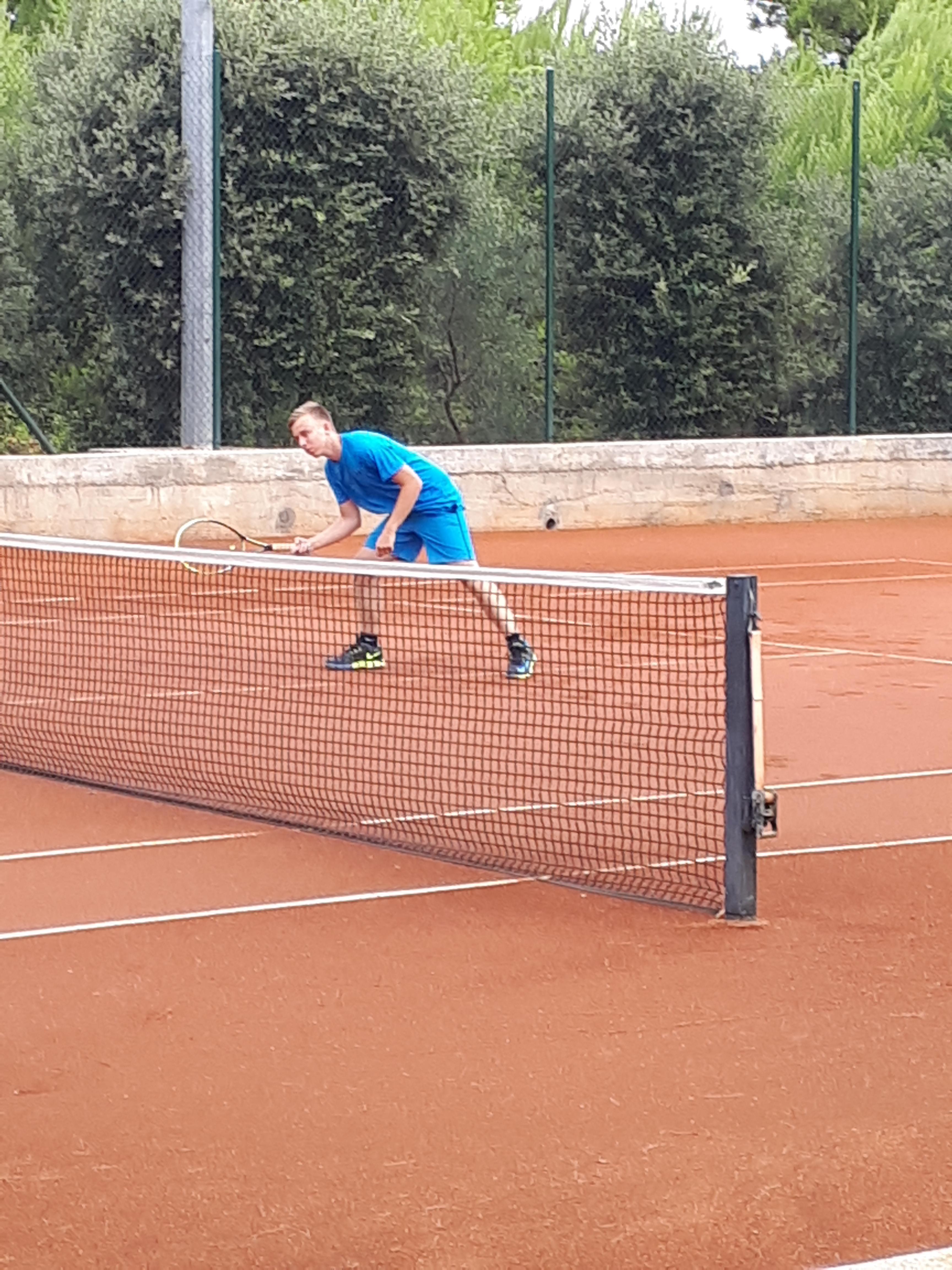
Mark David
Star sem 19 let, živim s težko obliko hemofilije A. Ko sem bil še majhen otrok, so me starši v strahu pred krvavitvami varovali pred poškodbami, zato sem bil velikokrat prikrajšan za kakšno dejavnost s sovrstniki.
V osnovnošolskih letih sem začel s prijatelji resno kolesariti. Zaradi preventivnih zdravil mi ni bilo
hudega, tudi če sem padel. Rad opazujem vesolje skozi teleskop in daljnogled. Včasih se zrenje v daljave zavleče pozno v jutro. Lahko rečem, da je astronomija več kot hobi. Zdaj, ko sem starejši in bolj odgovoren, se zavedam, da zaradi tako kakovostnega zdravljenja lahko počnem vse, česar si zaželim.
I am 19 years old and live with a severe form of haemophilia A. When I was a small child, my parents tried to protect me from injuries for fear of bleeding, so I was often deprived of activities with my peers during my childhood.
In my elementary school years, I started cycling seriously with my friends. Thanks to the preventive medication, I was fine even if I fell. I like observing outer space through a telescope and binoculars. Sometimes I go on looking into the depths of the space until late the next morning. I would say that astronomy is more than just a hobby. Now that I'm older and more responsible I realise that, thanks to such high quality treatment, I can do anything I want.
.jpg)
Ana
S hemofiliki sem začela delati leta 1980 kot sestra na hemato-onkološkem odelku pediatrične klinike in skupaj z njimi spoznavala njihovo bolezen. Zanje sta bili rezervirani sobi 36 in 37. Takrat ni bilo ambulantnega zdravljenja, ni bilo zdravljenja na domu in nekateri otroci so ležali tudi do pol leta s težkimi krvavitvami v sklepe. Takratno zdravilo se je imenovalo krioprecipitat. Bilo je v steklenicah, pozneje v vrečkah. Najprej ga je bilo treba odmrzniti in segreti na 37 °C, potem pa je počasi teklo v žilo. Bilo je veliko reakcij in otroci so potrebovali zdravilo za preprečitev anafilaktičnega šoka. Takrat so bili obiski staršev v torek in četrtek po dve uri, za konec tedna tudi samo za dve uri. Tako smo bile medicinske sestre njihove nadomestne mame. Spomnim se, da je leta 1983 bil občni zbor Društva hemofilikov Slovenije. Tam se je zbralo veliko družin, ki so prvič imele možnost, da si izmenjajo izkušnje. Po izobraževanju hemofilikov za samoterapijo na domu se je pojavilo novo zdravilo, koncentrirani faktor v
obliki injekcije. To je bilo veliko bolj priročno: najpomembnejše pa je bilo to, da ni bilo alergijskih reakcij. Po organiziranem tečaju aplikacije faktorja smo dali zdravilo na dom tistim, ki so bili usposobljeni za samoterapijo, bolnikom s težko obliko hemofilije in tistim, ki so bili zelo oddaljeni od Ljubljane.
I started working with haemophiliacs in 1980, as a nurse in the haemato-oncology unit of the Paediatric Clinic, and got to know my patients and the disease at the same time. Rooms 36 and 37 were set apart for them. There was no outpatient treatment back then, no home treatment either, and some children were laid up for up to six months with severe bleeding in the joints. The medication we used at that time was called cryoprecipitate. At first it came in bottles, later in bags. First it had to be thawed and heated to 37 degrees, then left to flow slowly into the vein. It often caused unwanted reactions, so the children had to have medication to prevent anaphylactic shock. Parents were only allowed to visit for two hours on Tuesdays, Thursdays and weekends. So we nurses were like surrogate mothers. I remember the 1983 General Assembly of the Slovenian Haemophilia Society. There were a lot of families there, and it was the first time they’d had the opportunity to share their experiences. Once haemophiliacs had been trained to treat themselves at home, a new medication became available: concentrated factor in the form of an injection, which was much more convenient and, more importantly, did not cause any allergic reactions. Once patients had been shown how to use it, those of them who had already been trained in self-treatment, or who had a severe form of haemophilia, or lived a long way from Ljubljana, had it delivered to their homes for self-administration.
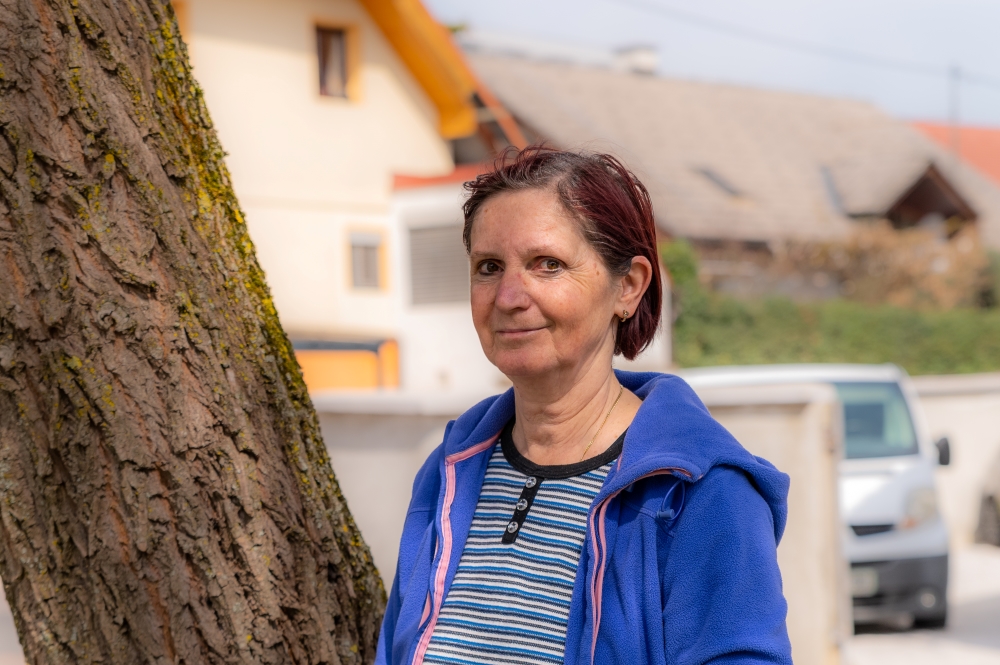
Rajka
Kot mamica hemofilika sem se leta 1983 začela udeleževati zborov hemofilikov in spoznavati druge hemofilike in njihove družine. Januarja 1989 sem začela sodelovati v Društvu hemofilikov Slovenije oz. v Centru za hemofilijo v UKC. Tam sem ostala 23 let. Delala sem v registru, izdelovala izkaznice hemofilikov in vnašala vso porabljeno terapijo v ambulantah, pri hospitalnem zdravljenju in pozneje tudi ob samoterapiji na domu. V tem času smo organizirali jesenske in zimske tabore na Tromeji, v Ratečah, ter praznovanje svetovnega dne hemofilije s predavanji v Murski Soboti. Imela sem priložnost spoznati mamice in druge člane družin hemofilikov. Počutili smo se kot ena sama velika družina. Delo v društvu me je zelo veselilo in vesela sem, da sem del te velike skupnosti, predvsem pa, da sem jih imela priložnost spoznati, opazovati in spremljati od dojenčkov prek pubertete vse do odraslih oseb.
As the mother of a haemophiliac, I started attending haemophiliac meetings in 1983, which allowed me to get to know other haemophiliacs and their families. In January 1989 I started working for the Slovenian Haemophilia Society and in the Haemophilia department of the University Medical Centre. I did that for 23 years. I worked on the haemophilia register, making haemophilia cards and keeping a record of all the treatments given, whether on an outpatient, inpatient or, later, self-administered basis. We organised autumn and winter camps in Tromeja and Rateče, and also organised our participation in World Haemophilia Day, including lectures in Murska Sobota. I was able to meet other mothers and family members of haemophiliacs. We were like a big family. Working with the Society gave me a lot of pleasure and I am happy to be part of this great community and, above all, to have had the opportunity to meet, observe and accompany the patients all the way from babyhood through to puberty and adulthood.
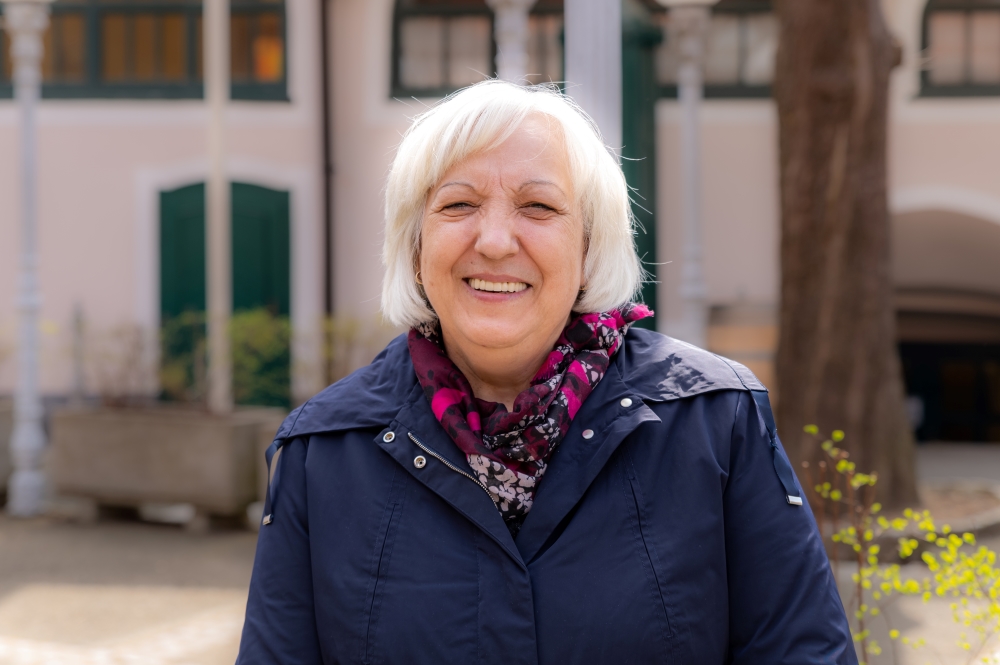
Strip/Cartoon:
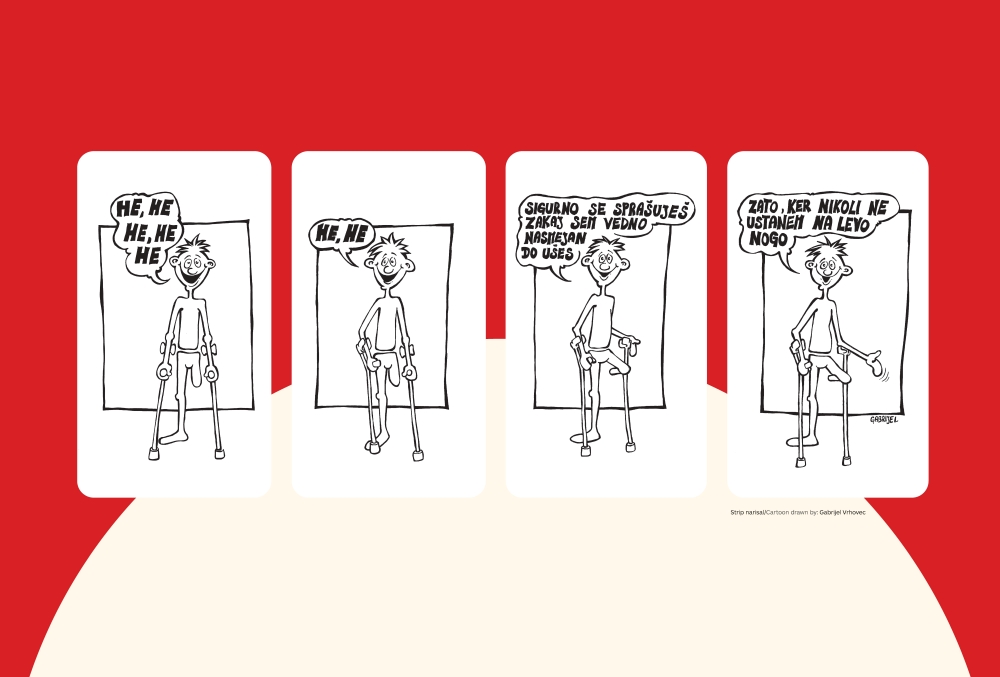
Zahvala / Thanks to:
